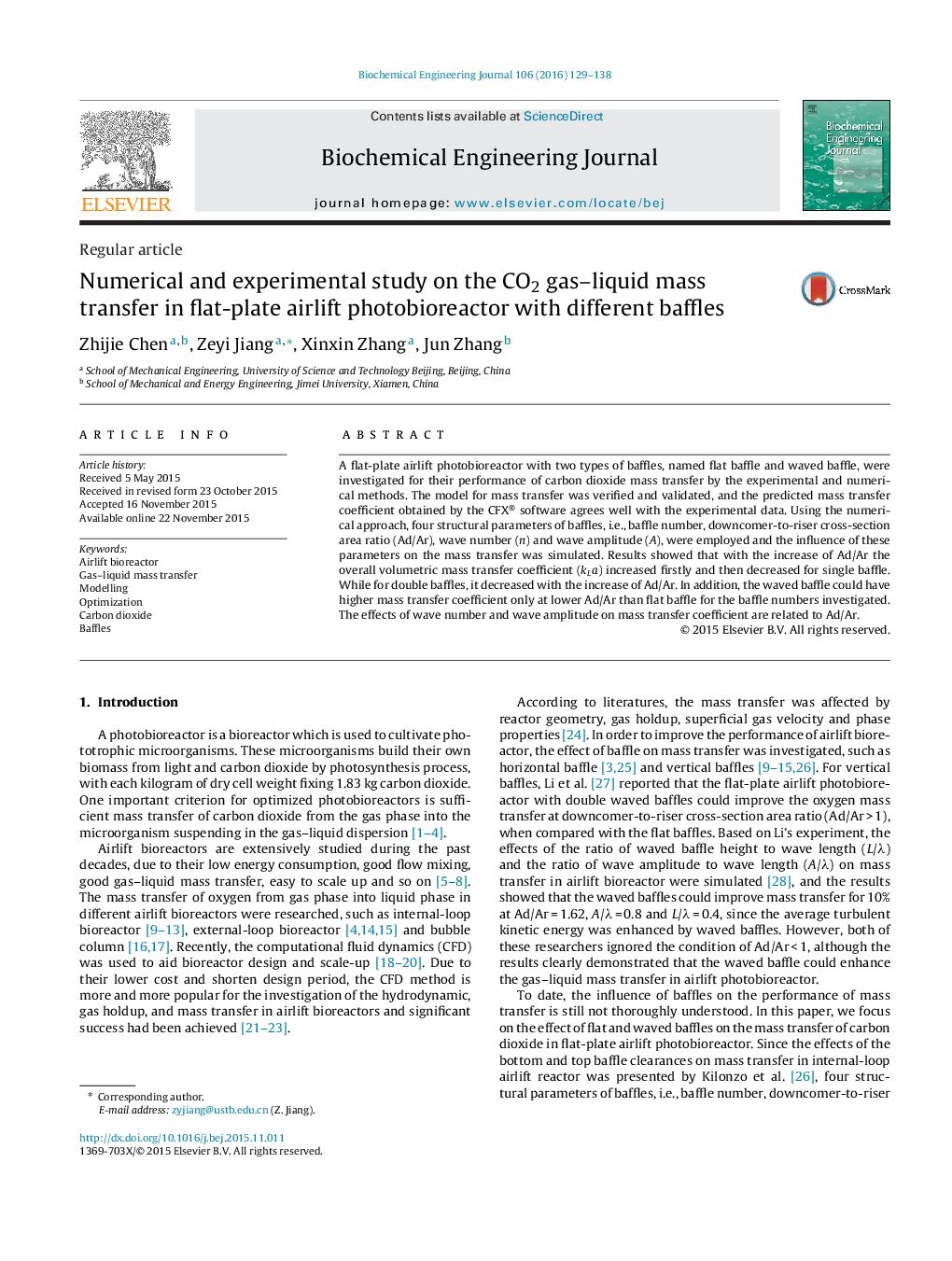| Article ID | Journal | Published Year | Pages | File Type |
|---|---|---|---|---|
| 6484010 | Biochemical Engineering Journal | 2016 | 10 Pages |
Abstract
A flat-plate airlift photobioreactor with two types of baffles, named flat baffle and waved baffle, were investigated for their performance of carbon dioxide mass transfer by the experimental and numerical methods. The model for mass transfer was verified and validated, and the predicted mass transfer coefficient obtained by the CFX® software agrees well with the experimental data. Using the numerical approach, four structural parameters of baffles, i.e., baffle number, downcomer-to-riser cross-section area ratio (Ad/Ar), wave number (n) and wave amplitude (A), were employed and the influence of these parameters on the mass transfer was simulated. Results showed that with the increase of Ad/Ar the overall volumetric mass transfer coefficient (kLa) increased firstly and then decreased for single baffle. While for double baffles, it decreased with the increase of Ad/Ar. In addition, the waved baffle could have higher mass transfer coefficient only at lower Ad/Ar than flat baffle for the baffle numbers investigated. The effects of wave number and wave amplitude on mass transfer coefficient are related to Ad/Ar.
Related Topics
Physical Sciences and Engineering
Chemical Engineering
Bioengineering
Authors
Zhijie Chen, Zeyi Jiang, Xinxin Zhang, Jun Zhang,
